Even experienced gardeners look with amazement and a fair amount of doubt on such an unusual view of Luke as a multi-tiered bow. Perennial vegetable culture causes concerns about whether it is possible to successfully grow such an "exotic" plant on the household plot.
In fact, a multi-tiered bow is absolutely unpretentious in caring, highly frostable, and harmful insects prefer to bypass it.
In addition, this useful product allows to obtain a green vitamin greenery throughout the year, and overhead bulbs that are formed in inflorescences are an indispensable product for the preparation of soles, marinades, salads and many other dishes. How to properly grow such a "miracle bow" on your garden, read in this selection of material.
Multi-tiered bow, botanical help
Multi-tiered bow has a lot of other names in his arsenal: onion horned, onion walking, onions Egyptian, whipping bow, canadian bow, catavissa. All of them characterize the unusual appearance of the plant and its morphological features.
- This type of family of onions from the genus of the bow is characterized by the hybrid nature of origin and is a valuable vegetable culture.
- Onions - a long-term grassy culture, which, according to some data, has grown in China, and only in the Middle Ages was brought to Europe.
- The view is suitable for growing early spring, the plant does not need resting period and thanks to high frost resistance can be redefined in any regions, even northern.
- Multilingual onion leaves wide (1.5-2 cm), tubular, hollow, grow almost all summer and reach a height of up to 40-50 cm. The color of the leaves is dark green, resembles the usual onions. From above, they are characteristic of many bulbous light wax floors.
- In the first year of landing, a multi-tiered bow is practically no different from the onion of the rep. And on the second year, the long-term bow begins to form the so-called. Lial "inflorescences". After the first level of air bulbs, greens get a little tougher and sharper.
- Considering that this species of Luke is a perennial plant, in a few years its bush grows up with a lush high greens and with sufficient nutrition is able to achieve a one-meter meter.
- The root line of the onion is represented by a small false bulb, which fully matches the autumn. Underground bulbs divide slowly and for the summer form only one or two roasting daughters. Such bulbs are distinguished by a loose structure, the lack of dry opal neck and are poorly stored after digging. But in the ground, in winter, these bulbs easily carry frosts and the freezing of the soil, completely retaining the germination.
- You can grow multi-tier onions as annual and perennial way. Moreover, this type of Luke is famous for high frost-resistant qualities and early rates of yields.
- In one place, under favorable conditions and proper care, multi-tiered bow grows up to 6-7 years, without losing the ability of annual formation of abundant green mass.
Multi-tier onions, features of inflorescences
- Unusual view of the inflorescences that begin to develop in May-June for months. They are planted on tubular high (up to 1 meter) arrows, and instead of familiar flowers form overhead air bulbs. Then, after 1.5-2 weeks, a new bloomon is formed from each "infloresception" (but not as high as the source), which also ends with a bulbous inflorescence. In this way, the plant can form from 2 to 4 levels (tiers) of inflorescences with air bulbs, depending on the age of the bow.
- One inflorescence can have from 3 to 30 such bulbs, weighing from 3-25 g each (depending on the tier). Notable is the fact that the largest bulbs are located on the lower tiers, and the tops are labored, but in more. Moreover, the bottom bulbs hold on the arrow tightly, while the top often begin to crumble.
- Multi-tier air bulbs are covered with durable dense skin and can be painted in yellow, brown-brown or purple color. Approximately by the middle of summer, overhead bulbs are ripening and germinate on the bush. Perennial period is absent. Seeds Lukovaya culture also does not forms.
Multi-tier onions, application and benefit of the plant
- All parts of the bow are used in food: juicy fresh greens, overhead and underground bulbs.
- Green leaves of onions - feathers, use for cooking salads, side dishes or soups. The taste of the green features of a multi-tier onion differs from a conventional green onion with spicy edge and sharpness. The advantage of this species of Luca is that its green arrows, unlike the usual varieties of bulbs, do not burn for a long time, while maintaining a gentle texture. Cut on the pen This kind of onions can every three weeks. Often, many years of onions are used to distill greens in winter.
- Air small bulbs are often used for marinovka and a variety of solutions, as they differ in excellent taste, moderate sharpness, juit and crunch.
- Bow-bay is rightly recognized as a leader among the other members of the onion crop on the content of vitamin C and useful phytoncids (essential oils). Also, in the green onion contains vitamins A, B1, B2, PP, calcium, phosphorus, copper, iron, and potassium.
- In addition to the nutritional value of a multi-tiered bow used in folk medicine for the prevention and treatment of scurvy (as well as the teeth and gums), atherosclerosis, and vitamin deficiency. Volatile bow helps to quickly get rid of colds. The plant has an antihelminthic, anti-inflammatory and bactericidal action, allowing its use to combat worms and as a wound-healing agent. Improving the secretory function of the stomach and intestines, perennial improves functioning of the gastrointestinal tract.
The multi-tiered bow, different from other bulbs
- Tiered onion crop yields by 7-10 days earlier than the Welsh onion or onion-Shnitov.
- Green feathers Egyptian onions softer, more tender, juicier and longer does not stiffen as compared to other bows. In addition, the greens after cutting grows very quickly.
- Matured underground bulb-bay bow is larger than that of onion batun.
- Tiered onions - a perennial plant, with no rest period. The plant begins to form green arrows in the winter, under the snow, at temperatures up - 6-7 0WITH.
- This type of onion has high frost resistance and tolerates frost without problems to -40-50 0C. In autumn the bulbs can be planted in the ground immediately after harvest.
- The landing-bay bow on the pen in greenhouses takes about 10-15 0C, whereas other types of onions take at least 25 0WITH.
- Underground bulbs tiered bow poorly tolerate storage and quickly exposed to decay.
- Taste qualities tiered green onions differ ostrinkoy and a touch of bitterness, due to the high content of essential oils in it.
- The content of vitamins and minerals in the Egyptian-bay bow higher than that of other members of the family.
The multi-tiered bow, varieties and species
In the multi-bow very few varieties. Consider the most common and proven varieties of onions stacked, according to the positive feedback from farmers:
- Tree onion "Odeccky winter 12" is characterized by a light green arrow, reaching a height of 25 to 40 cm. Excellent for cultivation in the southern regions of the country. Underground bulb oval, with violet color of the scales. The average rate of yield - 2.4-2.5 kg of green 1 m 2. About 30 airbobs are formed in the inflorescence. Taste sharp.
- Louk Multi-tier "Likov" - a river high-yielding grade, capable of 3 weeks to give about 4 kg of green leaves. The taste of greenery with a noticeable edge. Underground bulb small. The inflorescence forms no more than 8-10 overhead bulbs of oval form. Culture does not turn down, exposed to attacks of trips.
- Louk multi-tiered "Chelyabinsk Supermannie" is distinguished by early dates of ripening (about 20 days), high frost resistance, incl. And to return freezers. Greens has a soft taste with mild frame.
- Louk multi-tier "memory" - early grade with a rapid growth rate and high yield. 1 M. 2 You can collect up to 6 kg of juicy greenery. In inflorescence forms up to 8 bulbs. It has high taste.
- Onions Multi-Russian "Mushroom 38" forms a medium height bush (up to 40 cm), thick and compact. The variety of frost-resistant and early, zoned specifically for Siberia and Urals. The first cutting of the green pen can be done in 21 days after the planting of the bulbs.
It is possible to buy one or another mute onion variety in botanical nurseries, horticultural centers, specialized stores.
Multi-tier onions, growing peculiarities
This unusual view of Luke can be grown both in the southern regions, providing themselves, fresh greens and elastic bulbs in the entire growing season and in northern latitudes, where there is not too much a choice for cultivating vegetable crops.
The cultivation of onions is multi-tier is possible both in the open and indoor soil.
The above-ground bulbs are needed, so they are successful for the surveillance of Lyka Na Pepo in winter.
Selection of the plot and the preparation of the soil
- Given the fact that a multi-tiered bow begins to grow already at the beginning of spring, when the snow cover is often lying, it is important to initially choose a place to land a perennial.
- In order for as early as possible to please yourself and their surroundings of the first juicy greens, the plant for planting is chosen solar, well-warmed and protected from drafts and gusty winds. Well, that it was an exalted area where moisture will not be stated. On such a garden, the sun will quickly melt the remaining snow, which means that early harvest will be provided.
- This type of bow is very demanding about the soil. Perennial culture prefers light, air and moisture-permeable fertile soil with a neutral medium reaction (for example, loam). On acidic, stagnant, heavy or dense soils, the onions will develop slowly, weakly increasing the green mass.
- To deoxide the soil can be added to the soil plaster, chalk, limestone or wood ash. Any of the listed ingredients helps to align, too acidic pH. Heavy clay ground can be improved using sand or humus.
- Grocery for planting a multi-tier onion is dripping, we remove the weary grass, make fertilizers. Organic (compost, humidation at the rate of 10-15 kg \\ m are suitable as fertilizers 2) or mineral feeding (superphosphate, potassium chloride at the rate of 30-40 g \\ m 2).
- On the beds with perennial landings of Luke, with the onset of spring, remove all the fallen and half-chase leaves, as they may contain pathogenic microflora.
- The best predecessor plants for multi-tier onions will be cucumbers, beans, cabbage, potatoes, beets or zucchini. On one bed, the onions can be planted from 3 to 7 years.
Landing a multi-tier onion
For planting a multi-tier onion, both overhead and underground bulbs are used. The latter will be suitable as a landing material in a few years, when will be able to grow and give subsidiaries.
When to plant a multi-tier bow?
- The bulbs planted in the ground at the end of August - early September, so that they were able to completely root to the cold. The best time landing - after the past rain. If the plant after disembarking has managed to break the shoots - they should not be dismissed, so as not to weaken the bulbous culture on the eve of the winter. They independently dismissed with the onset of the first frosts, and early in the spring will actively begin to germinate in the form of a young sworn.
- Before boarding the bulbs, it is necessary to calibrate, i.e. split in size on large, medium and small. Each fractions are planted separately to organize the plant friendly shoots and ensure the necessary landing standards and the total harvest time.
How to put a multi-tier onion?
- Thus, for the largest bulbs, the deepest grooves are preparing (about 10 cm), with a frame of at least 25-30 cm. The interval between the bulbs is 15-20 cm. The average fraction of the bulbs is planted to a depth of 7-8 cm with the same distance between the bulbs . Small bulbs will suffice to be a grocery, a depth of 5-6 cm, with a similar interval between plants.
- After landing, the grooves with a bow spill with water. A similar simple agrotechnical reception will contribute to the fastest formation of the roots.
- There is another way to plant a bow when the whole garden is conditionally divided into two halves. In the first part, greens are grown, so the bulbs initially planted the thick of the usual. In the spring, for use in food, green feathers are pulling together with the bulbs, gradually thinning the bed. In the summer, such a thinning ends, and the young onion begins to actively increase the green mass. It remains only, as necessary, trim the finished "green harvest". As for the second half of the garden - it is used to grow overhead bulbs, so when landing complies with the necessary landings mentioned above. During the ripening of air bulbs, they are started to collect from the 2nd half of the beds, and the arrows cut almost the root itself. Soon, of the left "Penchkov" will again seem green arrows.
- The collected young bulbs can be used in different ways: apply to food or disembark (next year) again to the garden. In the summer, the above-ground bulbs begin to germinate directly on the parent bush and when they are planted in the ground, the first greens appear after 3 weeks. If there is a need to save the bulbs until the next landing, it is important to collect them from the bush in time until they start germinate. Until the landing, the above-ground bulbs store on the lower shelf of the refrigerator wrapped in paper.
How to grow onion annual?
- To grow a bow-annual, planting a multi-tiered bow is also carried out in the fall (or at the end of summer). In the spring, the feathers of the onions will begin to germinate and will be ready to use.
How to grow multi-tiered onions in a closed soil?
- If you plan the bulbs in a closed soil (in a greenhouse, greenhouse, under the film), the harvest of juicy green arrows will be ready for a week earlier than in the conditions of open soil. The advantage of the cultivation of vegetable culture in the closed soil is the dates of landing. They can be anyhow, which means landing can be carried out at any time of the year. Luke falling on the feather requires about 10-15 0WITH.
Multi-tiered bow, care rules
Multi-tiered bow attracts the attention of many gardeners and dachensons not only unusual, for onions, views, but also absolute unpretentiousness in care. Having worn, frost-resistant culture practically does not require attention, rarely exposed to diseases or pests.
Some dackets are tapping mature and high onion bushes to special supports (waxes), so that under the severity of multi-tiered overhead bulbs, the plants arrows did not lie.
Watering, loaning and mulching of a multi-tier
- After cutting the greenery, it is recommended every time to abundantly water the onions and pherring the beds.
- Watering onions is carried out at first after landing and during the period of severe drought.
- Frequent mooring of the soil is undesirable for bulbous culture, as it can provoke its rotting.
- The plant react negatively to weeds, so it is important to remove them regularly. Melting care in this case will help mulching beveled grass. But peat, sawdust or spruce needles, overlooking the soil, do not fit, as the acidic medium slows down the rose of the bow.
Putting fertilizers and dense
- Multi-tier onions, as a rule, begin to feed the second year of life. Fucks should be carried out after irrigated or rain.
- For intensive growth and extension of green mass during the growing season, there are at least two feeding. As fertilizers, most often use a mixture of potash salt and superphosphates.
- Some gardeners fertilize the plant after each cutting, achieving the highest possible growth rates and the development of perennial. In this case, it is recommended to alternate organic and mineral feeding.
- From the mineral fertilizers in the spring, at the beginning of the vegetation, the ammonium nitrate and potassium sulphate will be appropriate. Nitrogen-containing complexes should be used only in spring time.
- From the organic, excellent results give a fake based on wood ash (2 cups on 10 liters of water), a cow's solution (1 liter of water on 10 liters of water, insist 10 days, dilute up to 50 liters) or infusion from bird litter (1 l litter pour 1 l water, insist 3 days, dilute up to 20 liters). For fertilizer, some one of the listed funds is used.
Fighting diseases and pests of Luca Multi-tier
- In the phase of the development of a leaf of a bow, a length of about 20 cm, planting the plant is thinned, leaving between the instances of 25-30 cm. This technique allows you to prevent Luke contamination with such a disease as peronosporosis (false mildew). Signs of the disease are the yellowing and fading of the leaf of Luke. To combat pathogenic fungus, you will need a triple spraying with a 1% burglar solution.
- For prevention of peridosporosis, in addition to thinning, it will take regular soil loosening, weed removal, compliance with the norms of moderate watering and removing dry leaves. If there are big risks of Luke's infection with this fungal disease, the garden is better to treat 1% burglar fluid solution.
- In addition to false mildew, multi-tiered bow can be affected by the onion weevil or onion flies. A favorite place for insect pests - dry leaves of Luke. Therefore, in order to prevent the appearance of parasites, dry onions are constantly removed and burned. The aisle for scaring insects sprinkled ashes, naphthalene, tobacco dust or sharp ground pepper.
Collection and storage of the crop of the bouquet
- The crop of multi-tier onions is represented by 2 species: green leaves and bulbs.
- Overhead bulbs are collecting when they are fully formed (root tuberculk will appear on the bottom), they will get a light purple shade and will easily separate from the arrows (usually in the middle of summer). If this moment is missing - the bulbs will begin to germinate and then you will have to wait for the formation of the next tier of the above-ground bulb.
- Greens can be cut several times in one season. Feathers are cut at an altitude of about 5-6 cm from the neck of the false (underground) bulb. In the first spring after landing, the crop will be scarce, but from the 2nd year of life the bow will be generous for greens. The yield peak falls on the 3-4th year of the life of the plant after landing.
- The collected bulbs are used in different ways: immediately in food, landing or for further storage. It is necessary to store them in the refrigerator (or in the freezer), in the paper package. Air bulbs are not suitable for long-term preservation, as they have the properties to dying.
Multi-line reproduction
- The reproduction of the Egyptian bows is only a vegetative way. Multi-tier seeds does not form.
- Thus, culture is multiplied with the help of bulbies: both overhead and underground (the division of the bush).
- Detached, from the maternal bush, the bulbs are planted into the ground according to the rules described above.
Thus, a multi-tiered bow is a long-term, high-yielding and strain culture, which can be easily raised even in the harsh conditions of Siberia or Urals. Noteworthy onions not only with its unpretentious qualities, but also an unusual way to form an overhead bulbs, thanks to which the multi-tier vertical bed is obtained. The bow does not require the rest period and in the conditions of closed soil can be redeemed on the feather year round. As a harvest, the happy owner of this vegetable culture receives a juicy gentle greens for almost all the vegetative season and crispy dense bulbs with a whole set of vitamins and useful substances. Special care does not require a plant, and the process of cultivation of the perennial will master anyone.

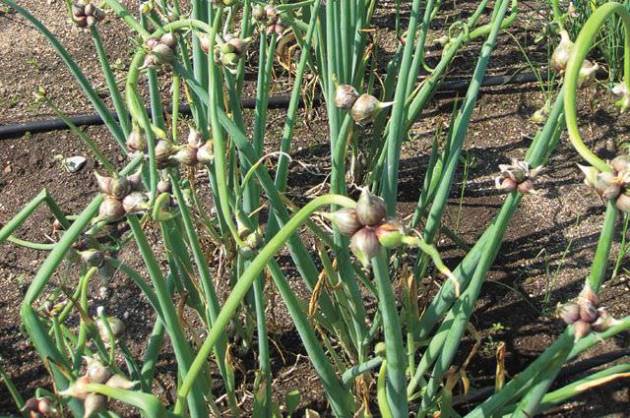
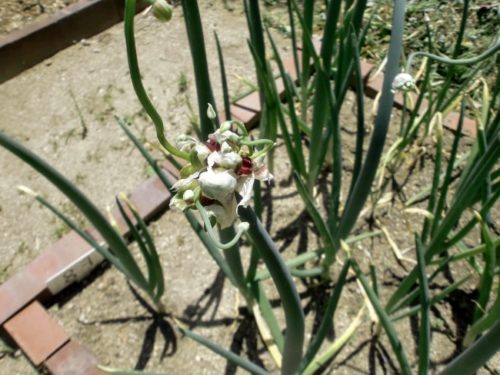
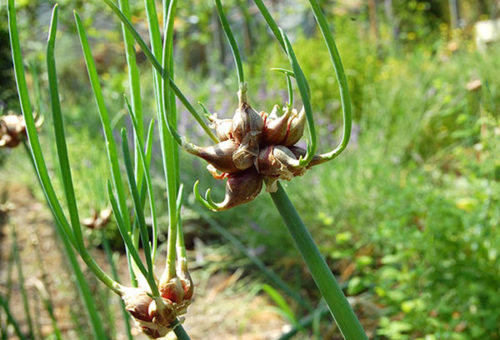

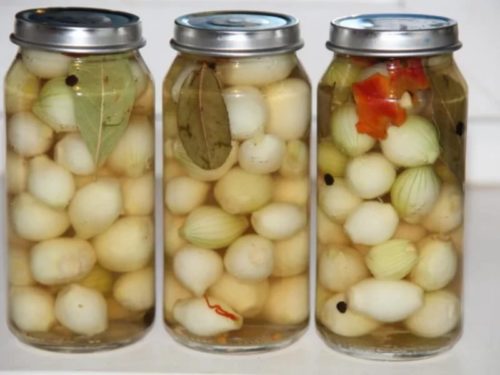

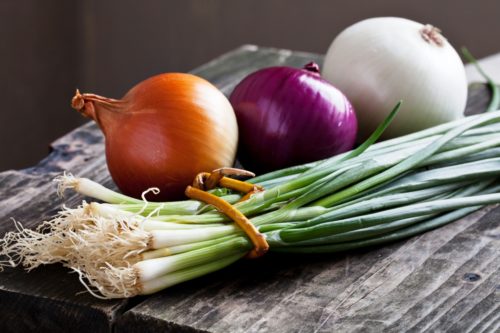

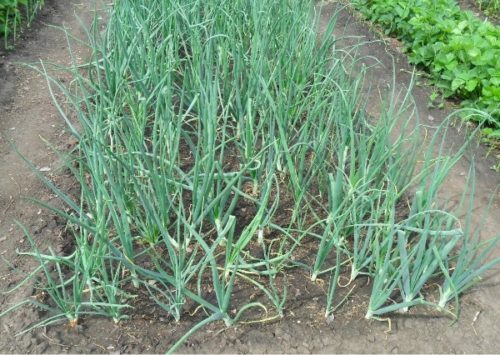
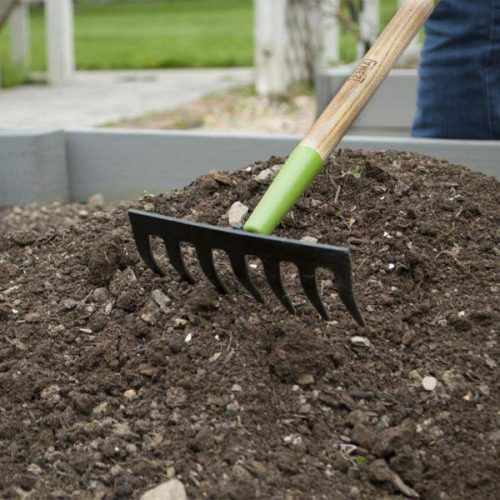
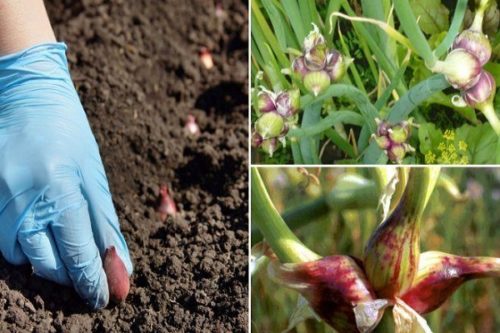
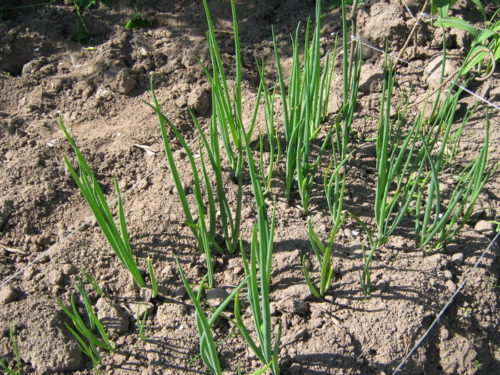
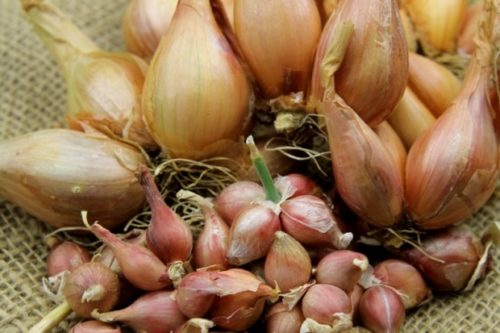
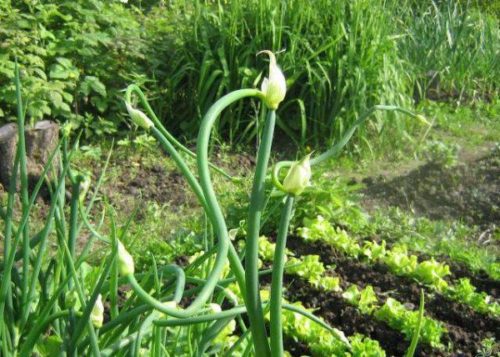
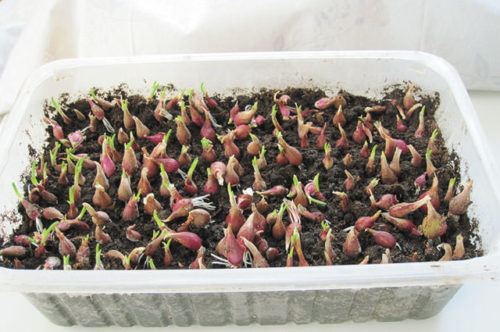
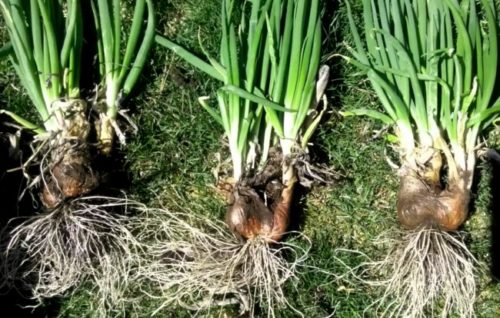
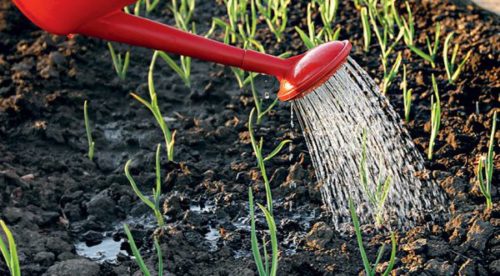
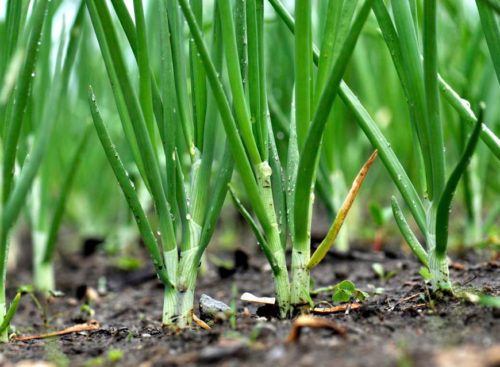
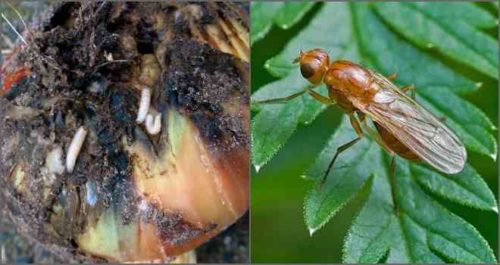

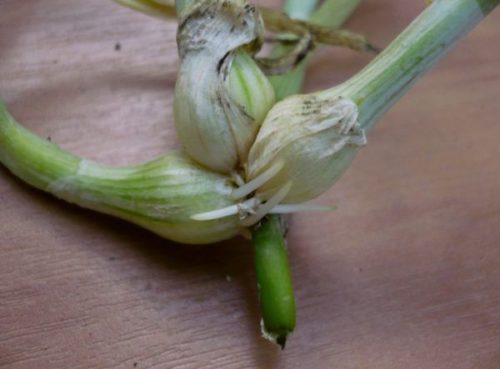

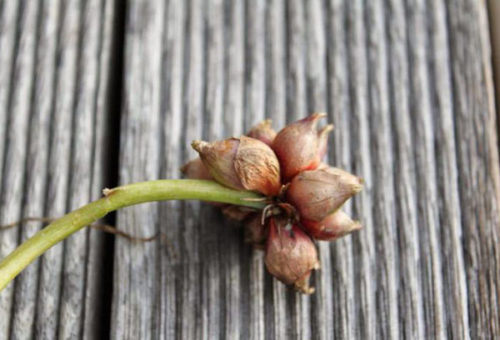
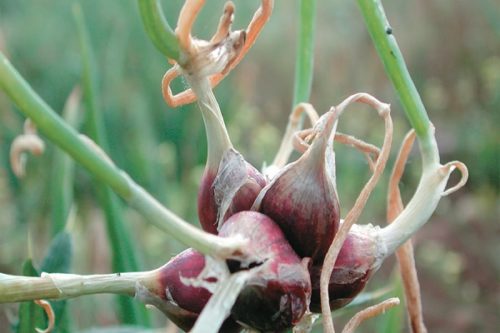












 Start a discussion ...
Start a discussion ...